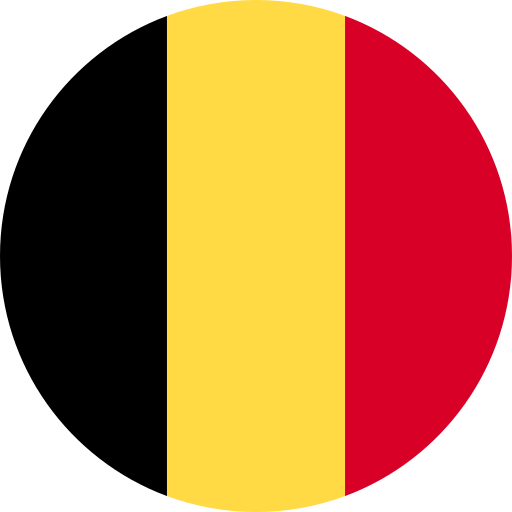Belgium’s cultural landscape is a fascinating tapestry woven from its rich history, especially the interplay between French and Flemish influences. As you explore the evolution of French-Flemish Belgium, you’ll uncover how these two languages and cultures have shaped not just regional identity but also national unity.
From medieval times to modern-day politics, the dynamic relationship between French and Flemish speakers has led to both collaboration and conflict. Understanding this evolution offers valuable insights into Belgium’s social fabric, language policies, and even its artistic expressions. Dive into this intriguing journey that reveals how language can both divide and unite a nation.
Key Takeaways
- Historical Significance: The evolution of French and Flemish influences in Belgium dates back to the Middle Ages, shaping regional identities and cultural dynamics over centuries.
- Political Influences: Political changes, particularly language policies, have played a crucial role in favoring one language over the other at various times, affecting societal tensions and national unity.
- Linguistic Developments: Both French and Flemish languages have significantly influenced Belgium’s artistic expressions, including literature, theater, and music, reflecting a rich cultural tapestry.
- Cultural Interplay: The coexistence of French and Flemish cultures fosters unique narratives that enrich Belgium’s literary landscape while promoting diverse artistic collaboration.
- Contemporary Relevance: Understanding the historical context of these linguistic relationships is essential for grasping modern social structures and communication methods within Belgium today.
- Voiceover Industry Impact: The voiceover industry plays a vital role in adapting both linguistic traditions into multimedia formats, showcasing the importance of authentic representation from both communities.
Historical Background
The evolution of French and Flemish influences in Belgium dates back to the Middle Ages. During this period, both languages coexisted, shaping regional identities. The linguistic divide became more pronounced with the establishment of the Burgundian Netherlands in the 15th century, which integrated various territories under a single rule.
Political changes further complicated this relationship. The Treaty of Arras in 1435 marked a significant moment for French influence, aligning many Flemish regions with France. Conversely, the rise of Dutch-speaking communities during the Protestant Reformation fostered a resurgence of Flemish identity.
In the 19th century, Belgium’s independence from the Netherlands created an environment where both languages could flourish. However, tensions emerged as language policies prioritized French in administration and education, leading to resentment among Flemish populations.
By the late 20th century, linguistic rights gained prominence through constitutional reforms. These reforms recognized bilingualism and established distinct language regions within Belgium—Flanders predominantly Dutch-speaking and Wallonia primarily French-speaking.
Understanding this historical context is crucial for grasping contemporary cultural dynamics in Belgium. The interplay between these two languages continues to influence social structures and communication methods today.
Linguistic Developments
Linguistic developments in Belgium reflect the complex interplay between French and Flemish languages. These developments shaped regional identities and influenced cultural expressions over centuries.
Influence of French
French influence in Belgium emerged prominently during the Burgundian Netherlands era, where it established itself as a language of administration and culture. It played a crucial role in shaping social hierarchies, with French often associated with prestige and education. As you explore Belgian culture, you’ll notice that many artistic expressions—such as literature, theater, and film—originated from or were heavily influenced by French traditions. The emphasis on French also extended to the media landscape, where voiceover work frequently utilized this language for promotional materials, documentaries, and commercial content.
Influence of Flemish
Flemish influence gained momentum during the Protestant Reformation when Dutch-speaking communities began asserting their identity. This resurgence highlighted the importance of Flemish dialects in local art forms, including music and theater. The linguistic shift resulted in an increased focus on nurturing Flemish talent across various sectors—including voice acting—where local artists embraced their heritage while resonating with national audiences. Today, you can find a diverse range of voiceover projects featuring Flemish talent that capture authentic regional accents and storytelling styles vital to connecting with audiences effectively.
These linguistic developments illustrate how both languages contribute significantly to Belgium’s rich cultural tapestry while continuing to evolve within contemporary contexts like media production and artistic collaboration.
Cultural Aspects
Cultural expressions in Belgium reflect the complex interplay between French and Flemish influences, showcasing a rich tapestry of literature, arts, music, and traditions.
Literature and Arts
Belgium’s literary landscape features prominent contributions from both French and Flemish writers. The coexistence of these languages fosters a unique blend of narratives that enrich Belgian literature. Notable French authors like Charles De Coster delve into themes relevant to national identity, while Flemish poets such as Hugo Claus express local dialects and cultural nuances.
In visual arts, the influence of both cultures is evident through renowned artists like René Magritte in surrealism or Pieter Paul Rubens in Baroque painting. Theater also thrives as an essential cultural outlet; various productions often incorporate bilingual elements reflecting regional diversity. Furthermore, the voiceover industry plays a significant role in adapting literary works into multimedia formats, allowing stories to reach broader audiences through skilled voice talents who capture the essence of each character.
Music and Traditions
Belgian music showcases a vibrant mix of styles influenced by both cultures. Traditional folk music varies across regions; Wallonia presents chanson Française while Flanders boasts distinct folk traditions. Festivals celebrating local culture often feature performances that highlight this musical diversity.
Moreover, contemporary musicians draw inspiration from historical roots while integrating modern genres such as pop and electronic music. Voice artists contribute significantly to this scene by lending their talents for narration and song interpretation across various platforms like radio broadcasts or online content.
Traditional celebrations also reflect cultural richness; events such as Carnival de Binche exemplify how folklore intertwines with community identity, drawing visitors keen on experiencing authentic Belgian heritage firsthand. Through these aspects—literature, arts, music—the evolution of French-Flemish culture continues shaping Belgium’s dynamic identity today.
Political Changes
Political changes in Belgium significantly influenced the evolution of French and Flemish cultures. These shifts shaped the governance structure, impacting language use and regional identity.
Evolution of Governance
Governance in Belgium transformed through various political reforms, reflecting its complex linguistic landscape. Early governance systems favored centralized authority, often prioritizing French over Flemish languages. The establishment of the Belgian state in 1830 marked a shift toward recognizing both linguistic communities. Subsequent constitutional amendments aimed to ensure equitable representation for Dutch-speaking and French-speaking populations. By creating regions with distinct language policies, such as Flanders for Dutch and Wallonia for French, these changes promoted local governance that respects cultural identities.
Language Policies
Language policies played a crucial role in shaping societal dynamics within Belgium. Initial policies favored French due to historical prestige associated with the language. This led to widespread frustration among Flemish populations seeking recognition and support for their language and culture. In response to growing tensions, reforms during the late 20th century established official bilingualism, mandating equal status for both languages in government operations.
Today’s language laws delineate areas where each language predominates, facilitating better communication between communities while promoting cultural expression across mediums like literature and media production. These policies contribute to an environment where voiceover talent can thrive by representing authentic voices from both linguistic groups. Understanding these political nuances is essential when collaborating with voice artists or actors who capture Belgium’s diverse linguistic traditions in projects ranging from commercials to documentaries.
Conclusion
The evolution of French and Flemish cultures in Belgium offers a fascinating glimpse into the nation’s identity. Understanding this dynamic interplay helps you appreciate how language shapes social relationships and cultural expressions.
As Belgium continues to navigate its bilingual landscape, the ongoing collaboration between French and Flemish influences showcases a commitment to inclusivity and diversity. This rich cultural heritage not only enriches artistic endeavors but also fosters community connections across linguistic divides.
By engaging with both languages and their histories, you’re better equipped to grasp the complexities of Belgian society today. Whether through literature, music, or visual arts, the legacy of French and Flemish interactions remains integral to understanding Belgium’s vibrant culture.
Frequently Asked Questions
What are the main languages spoken in Belgium?
Belgium has three official languages: Dutch, French, and German. The majority speak Dutch in Flanders, while French is predominantly used in Wallonia. German is a minority language spoken in a small eastern region.
How have French and Flemish cultures influenced each other?
French and Flemish cultures have historically influenced each other through art, literature, and politics. Their interaction has shaped regional identities, contributing to both collaboration and tension throughout Belgium’s history.
What historical events shaped Belgium’s linguistic landscape?
Key historical events include the establishment of the Burgundian Netherlands in the 15th century and Belgium’s independence from the Netherlands in 1830. These events emphasized language policies that favored French initially but later recognized bilingualism.
Why are language policies important in Belgium?
Language policies play a vital role in ensuring equitable representation for both Dutch-speaking and French-speaking communities. They promote cultural expression and facilitate better communication between different linguistic groups.
How does Belgian culture reflect its linguistic diversity?
Belgian culture showcases its linguistic diversity through literature, visual arts, music, and festivals. This includes contributions from both French and Flemish artists that enrich the national narrative while highlighting regional traditions.
What impact did political changes have on language use in Belgium?
Political changes influenced language use by shifting governance structures towards recognizing both linguistic communities. Reforms established official bilingualism to ensure fair representation for all citizens based on their language preferences.
How do contemporary media projects represent Belgian talents?
Contemporary media projects highlight Belgian talents by showcasing authentic regional accents and storytelling styles from both French-speaking and Flemish communities. This reflects ongoing collaboration across various artistic fields like voice acting and film production.
Why is it essential to understand Belgium’s cultural evolution?
Understanding Belgium’s cultural evolution provides insights into its social dynamics, identity struggles, and artistic expressions today. It illustrates how the interplay of languages can be both divisive yet unifying within society.







